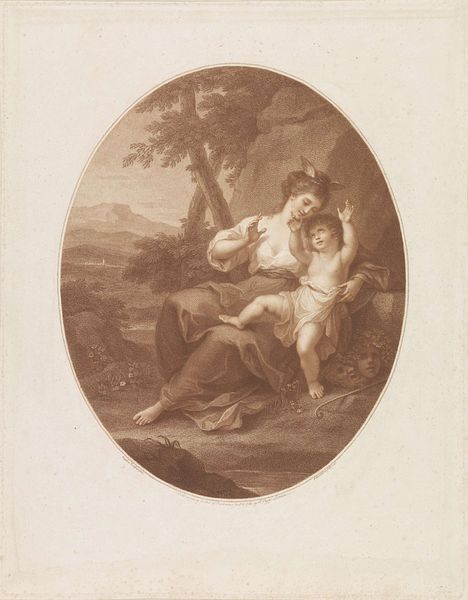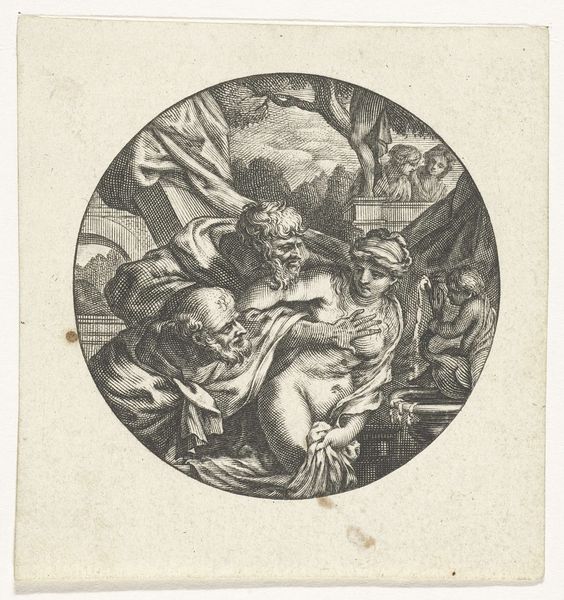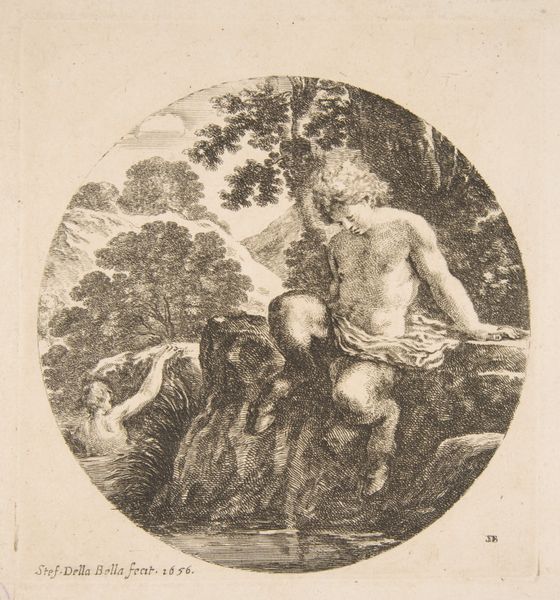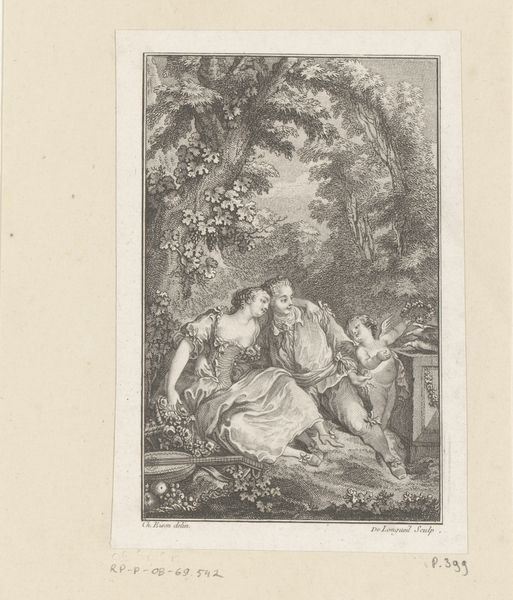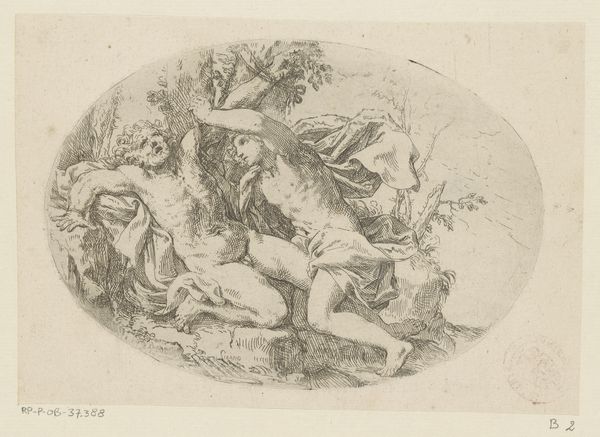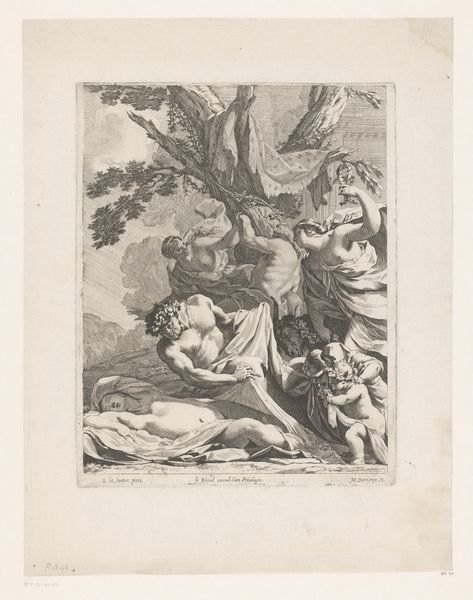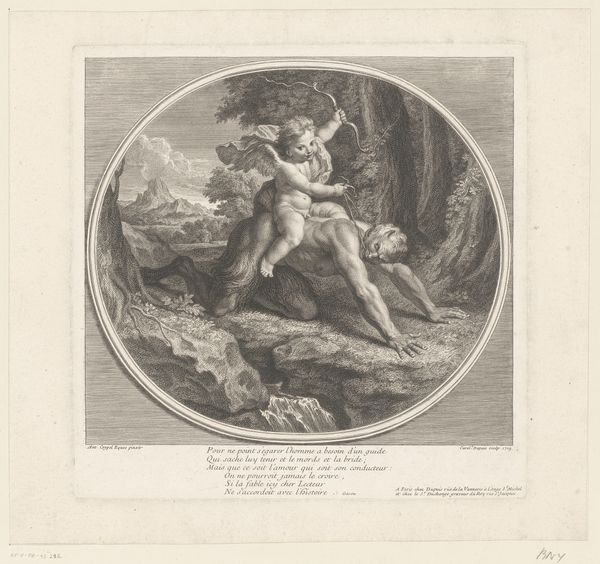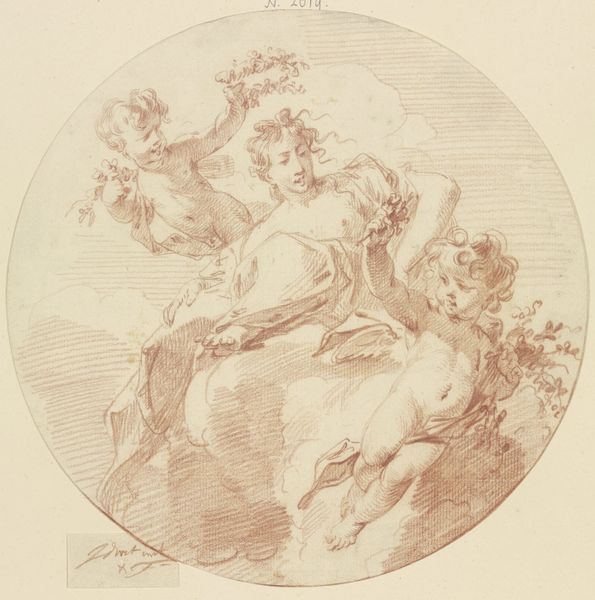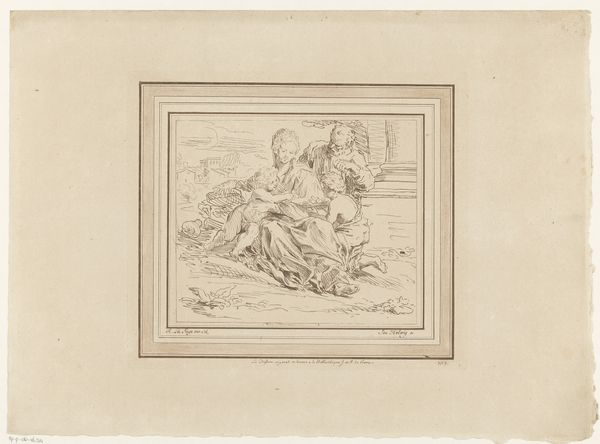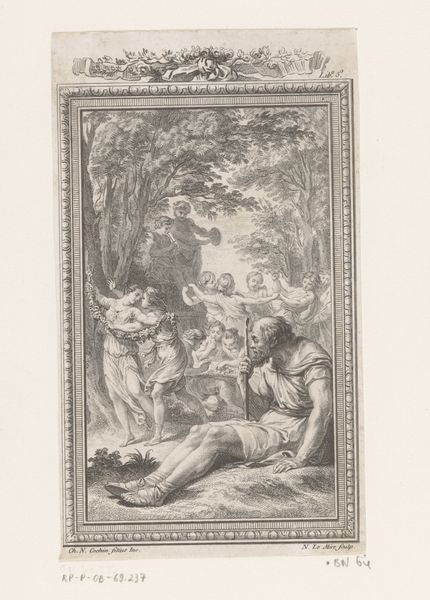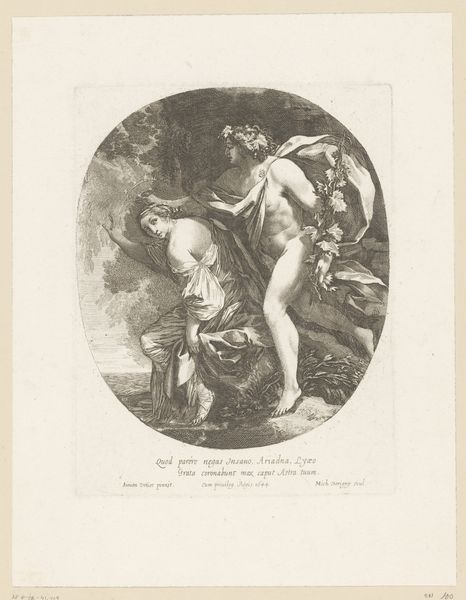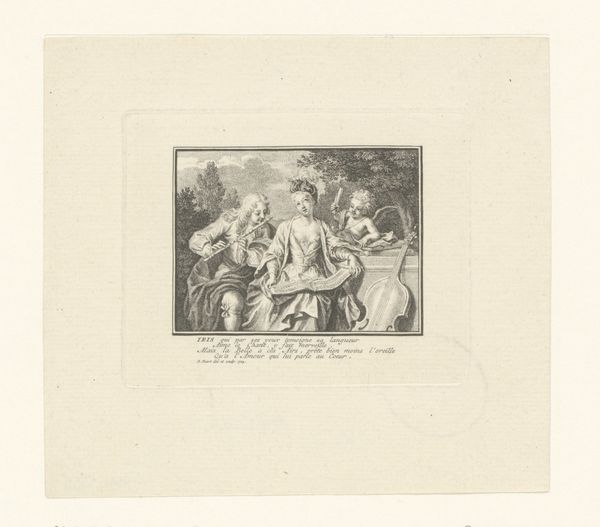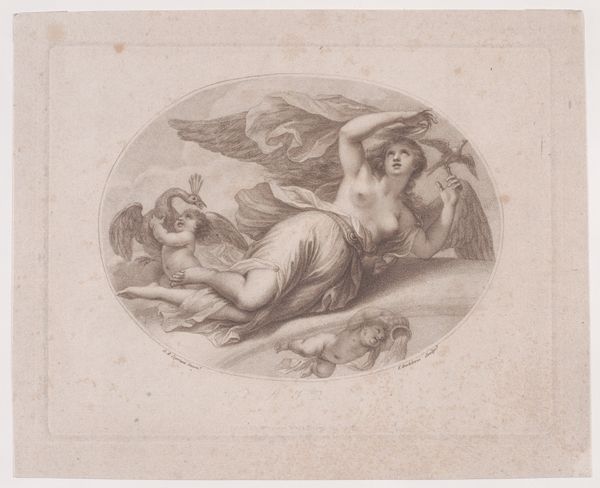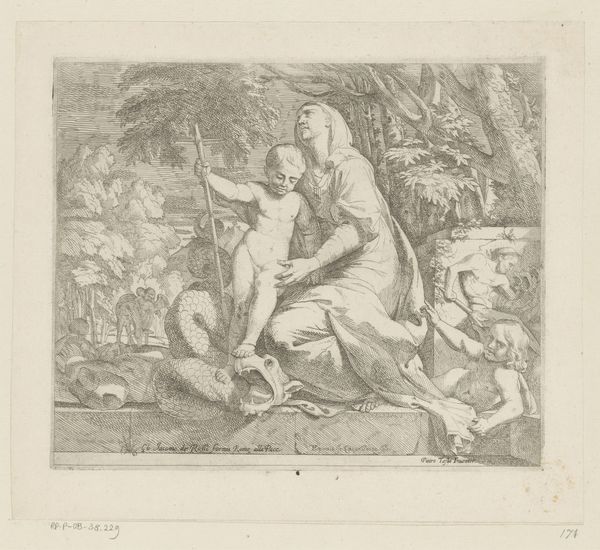
drawing, print, paper, engraving
#
drawing
#
allegory
# print
#
landscape
#
figuration
#
paper
#
romanticism
#
history-painting
#
engraving
Dimensions: 163 × 162 mm (plate); 167 × 165 mm (sheet)
Copyright: Public Domain
Curator: Look at this beautiful print, Sappho Listening to Love, by Francesco Bartolozzi. The exact date is unknown, but it's housed right here at the Art Institute of Chicago. What's your immediate reaction? Editor: The sepia tones give it such a delicate, almost ethereal feel. And the composition, with the oval frame and the figures nestled in the landscape, feels very intimate, despite the grand scale. It reminds me of classical cameos. Curator: Precisely! Bartolozzi was known for his engravings, often reproducing works by other artists. This is an engraving printed on paper. Notice the textures he creates solely through line and tone. The printmaking process allowed for relatively inexpensive copies to circulate, shaping aesthetic sensibilities beyond elite circles. Editor: That's fascinating. So, it’s not just about the romantic depiction of Sappho, the historical figure, but also about the mechanics of disseminating images and ideas to a wider public, challenging previous patronage systems, creating opportunities for marginalized groups of artists and audiences. What statement is he making about the labor and production of beauty? And consider the implications for women and artists throughout the history of art. Curator: Excellent points! And in its portrayal of Sappho, the image also offers a commentary on the relationship between art and love. Her gesture towards Love is powerful, showing love inspiring creativity. This particular rendering feels less about personal, romantic love and more about how it spurs artistic practice, as suggested through a male personification. It's like the muse, as a force that shapes what the artist does. Editor: The male personification raises interesting questions about how sexuality and creativity were viewed during that time. I am struck by what feels left out. What does it mean to visualize artistic creativity through this gendered dynamic of inspiration and influence? Who are we including or excluding in this account, and is there a way we can begin to reimagine a less limited account? Curator: I completely agree that we ought to analyze those erasures. Ultimately, it shows a dedication to craft while prompting critical questions about social frameworks that condition artistic genius. Editor: Well, I leave considering what stories and histories have been erased in this rendering, while honoring its contribution to social awareness through wider circulation. Curator: A thoughtful observation, and I appreciate your emphasis on how production changes can create cultural shifts!
Comments
No comments
Be the first to comment and join the conversation on the ultimate creative platform.
